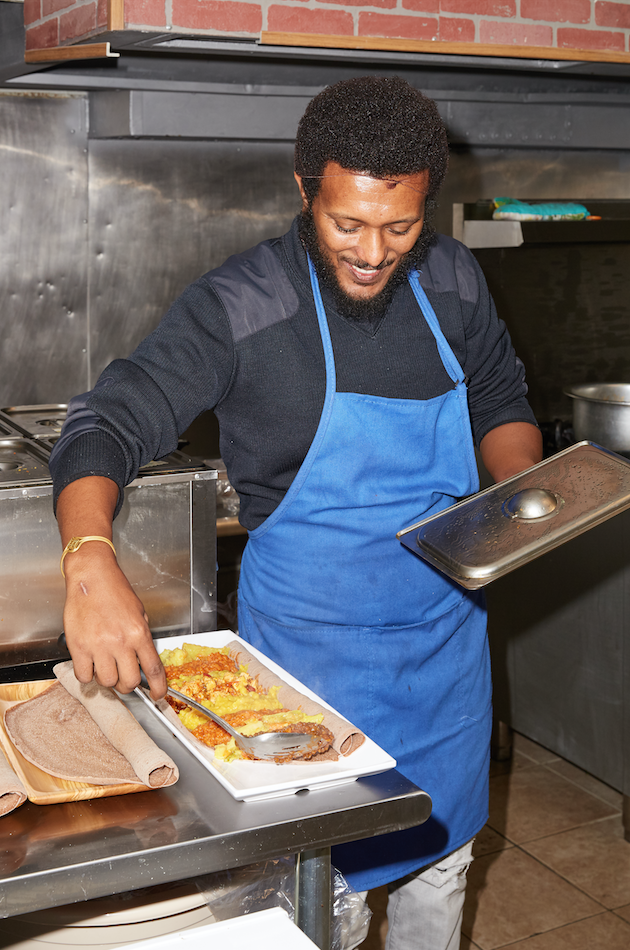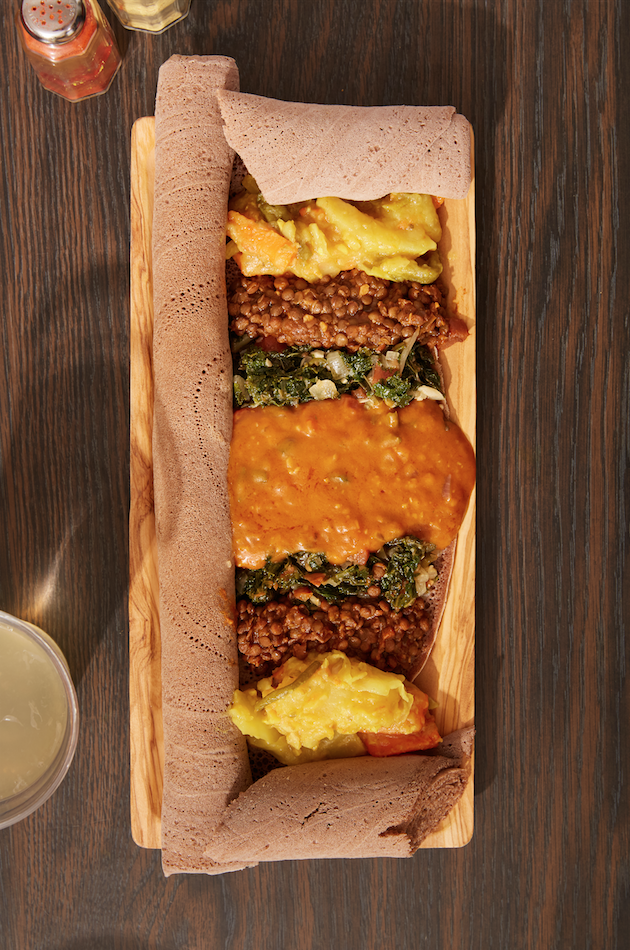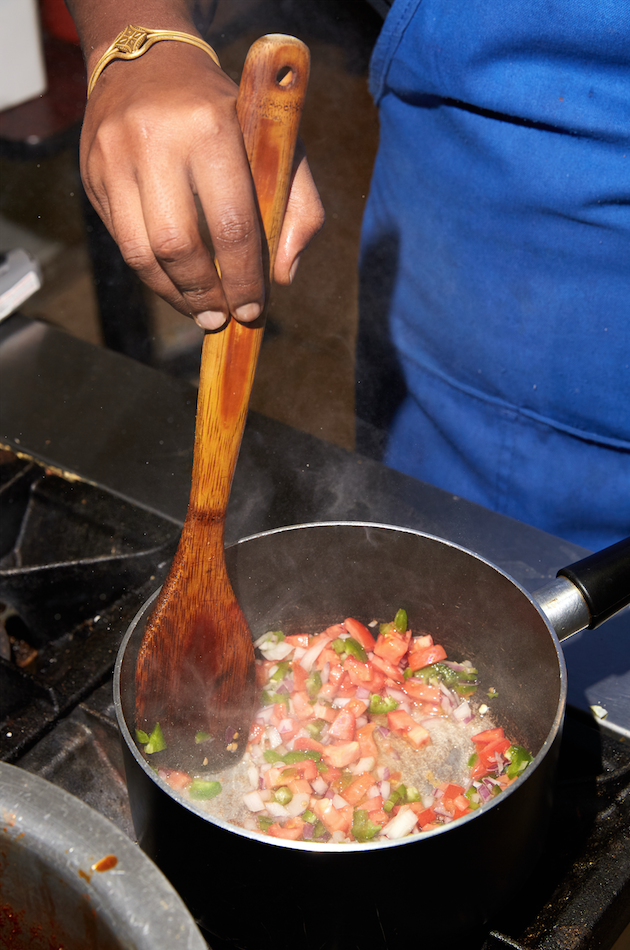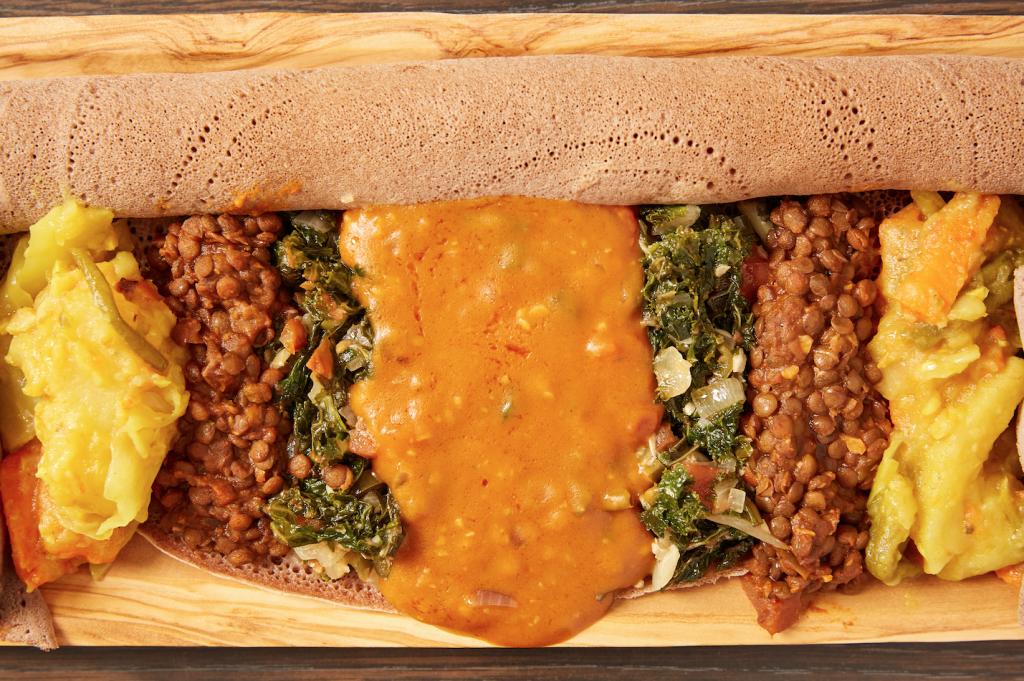Nile Vegan offers plant-based Ethiopian food near Ohio State’s campus

Tucked away on Worthington St. near Ohio State’s campus is a hidden gem awaiting your arrival. There are no bright neon signs attracting visitors from the streets, and the interior only holds three booths. In an age where Instagram aesthetics and social media presence dominates, Nile Vegan chose to focus on what’s really important: the food.
Nile Vegan is a new restaurant offering plant-based Ethiopian cuisine created by chef and owner Siyum Tefera. The inspiration behind the menu here is thanks to Tefera’s roots growing up in Ethiopia where he lived until 2010 when he and his family made the move to Columbus. Whether it’s the injera or the Shiro be Gomen—chickpea sauce with stewed kale—these recipes come directly from Tefera’s time watching his mother in the kitchen throughout his childhood. It’s this feeling of home cooking combined with community that Tefera is hoping to build with his eatery.




Photos: Brian Kaiser
As mentioned previously, the interior of the restaurant is simple. It feels somewhat like sitting in a dining room in your home with a kitchen attached to it—this was intentional, too. Tefera said when he was younger, he would sit in his dining room while his mother cooked meals and the two would converse about life. He continued this ideal with the design of the restaurant by keeping the kitchen area open and visible to customers. When I ordered my meal and took a seat, I watched Tefera slice onions and tomatoes that would eventually find their way into stews and sauces on my plate. Not only does this provide the chance for customers to interact with Tefera and his team, it’s also a bit of a flex. These folks aren’t using frozen goods from giant grocery stores or mass creating food—they are using fresh ingredients made to order.
The eating experience here is also twofold: it’s delicious, and fun to eat. Instead of forks, spoons, and knives on the table, your eating utensils are your hands. The injera—a sourdough risen flatbread—serves as a bed and sponge for scooping and soaking up the various sauces and stews.
BROUGHT TO YOU BY
And the options for sauces and stews can range from mushroom stew to curried vegetable medley featuring freshly chopped cabbage, carrots and potato chunks stewed in vegan butter, onion, garlic, and turmeric. While most dishes are made on the mild side, Tefera said he can make dishes more spicy, or you can control your spicy adventure by adding as much—or as little—berbere, a fiery bright red seasoning, which is available on your table.
With winter on the horizon, trying Ethiopian food should be on everyone’s to-do list. The dishes are akin to comfort food, but on the non-traditional side. Instead of mashed potatoes and chicken noodle soup, it’s hearty portions of slow-cooked stews chock full of spices and seasonings. While you’re free to attack the menu as you see fit, I recommend bringing a friend and each ordering something different so you can share entrees. This gives you the chance to experiment with new flavors and options while also finding your menu favorite. If you ask Tefera, he recommends the Shiro, which is a slow-cooked chickpea sauce. And if you ask me, I’ll take three extra helpings of the Misir be Bamia—a stew featuring red lentils with okra.
But why plant-based? A cursory Google search shows a multitude of Ethiopian dishes where the main star is meat like Tibs—sauteed meat chunks, or Kitfo—Ethiopian beef tartar. For Tefera, it wasn’t so much adding a new vegan eatery to a growing list in the city, rather it was just a part of his lifestyle. He said he grew up eating mainly vegan, as Ethiopian traditions maintain ideals such as fasting on-and-off for nearly half the year. On those days, observants only eat one meal in the afternoon or evening and cut out all animal products. Choosing to stay vegan wasn’t so much of a concept as it was just what Tefera naturally knew.

Though Nile Vegan has only been open since mid-October, Tefera already has his eyes set on the future. First he said he wants to better understand his customers and their desires so he can serve them better. This includes tweaking the menu options as well as adding a few new ones such as an eggplant stew. Additionally, he wants to change up the interior of the restaurant. As of now, the three booths that are available can be quickly filled up, leaving patrons nowhere to sit. In the future, expect more options for single eaters, as well as a patio area once the weather warms.
For now, though, Tefera said he has been humbled by the amount of reception the restaurant has received. Beyond Tefera’s work, it’s been a family effort, as his mother can be found in the kitchen, cooking orders, conversing with her son, and serving as quality control. Hey, she did create these recipes, after all.
Nile Vegan is located on 1479 Worthington St. near Ohio State’s campus. For hours, operations, and more information, follow Nile Vegan at @nilevegan on Instagram.
BROUGHT TO YOU BY




